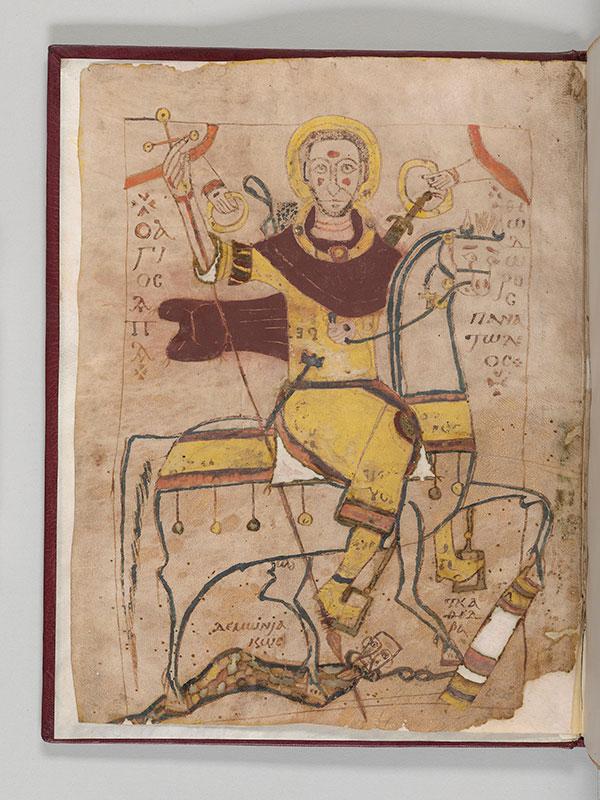
Manuscript martyrdom written and illuminated in Touton, Egypt, after December 31, 867.
Roughly half of the leaves have sewing repairs.
Colophons (All from Cairo Ms 3891): 1) fol. 13v: Donation in Coptic: By Apa Phelabia, daughter of Kurillos, from Pis̆ai; to the Monastery of St. Michael near present-day Hamuli; 2) fol. 13v: Memorial in Coptic: For the archimandrite, koinobiarch, and leader (proestōs) Deacon Hēlias, oikonomos of the same Monastery, together with all the members of the monastery; 3) fol. 13v: Copyist and artist, place of copying in Coptic: By the copyist Mōusēs, son of Mēna, and his brother Subdeacon Khaēl from Touton.
Later dating terminus given as per L. Depuydt in "Catalogue of Coptic manuscripts in the Pierpont Morgan Library", p. L: "The earliest and latest dates found in Hamuli colophons are AD 822/823 and AD 913/914...Since the Hamuli group is fairly homogeneous, it is reasonable to assume that all manuscripts from Hamuli roughly belong in the period AD 822/823-913/914."
Written area ca. 250 x 178 mm. Divisions: Ekthesis, enlarged or sometimes greatly enlarged initial, and paragraphus sign (Touton style with reddened budded diple in column a and obelus in column b) setting off paragraphs.
Script: Upright (titles and colophons, both wanting and now in Cairo, right-sloping). 10 lines = ca. 81 mm.
Superlineation: Non-standard. Punctuation: Raised reddened dot in conjunction with a space. Tremas.
Collation: Signed on first and last page of the quire, top inner margin. No quire ornaments, monograms, headlines or catchwords.
Scribe: Mōusēs and Khaēl from Touton.
Artist: Probably Mōusēs or Khaēl from Touton.
Decoration: Frontispiece of Theodore the Anatolian on horseback piercing a deamon with his spear, a depiction of a chair, 2 hands offering crowns of martyrdom to the saint; paragraphus signs, signatures and page numbers, extended letters. Colors: Dark reddish orange (Centroid 38), dark grayis reddish brown (47), moderate yellow (87), green (corroded).
Related fragments: At the Coptic Museum in Cairo (Mathạf al-Qibtị̄), Ms 3819 (= Cairo Ham. G, formerly JdE 47555) completes the text block. Fully described in Depuydt, no. 411.
